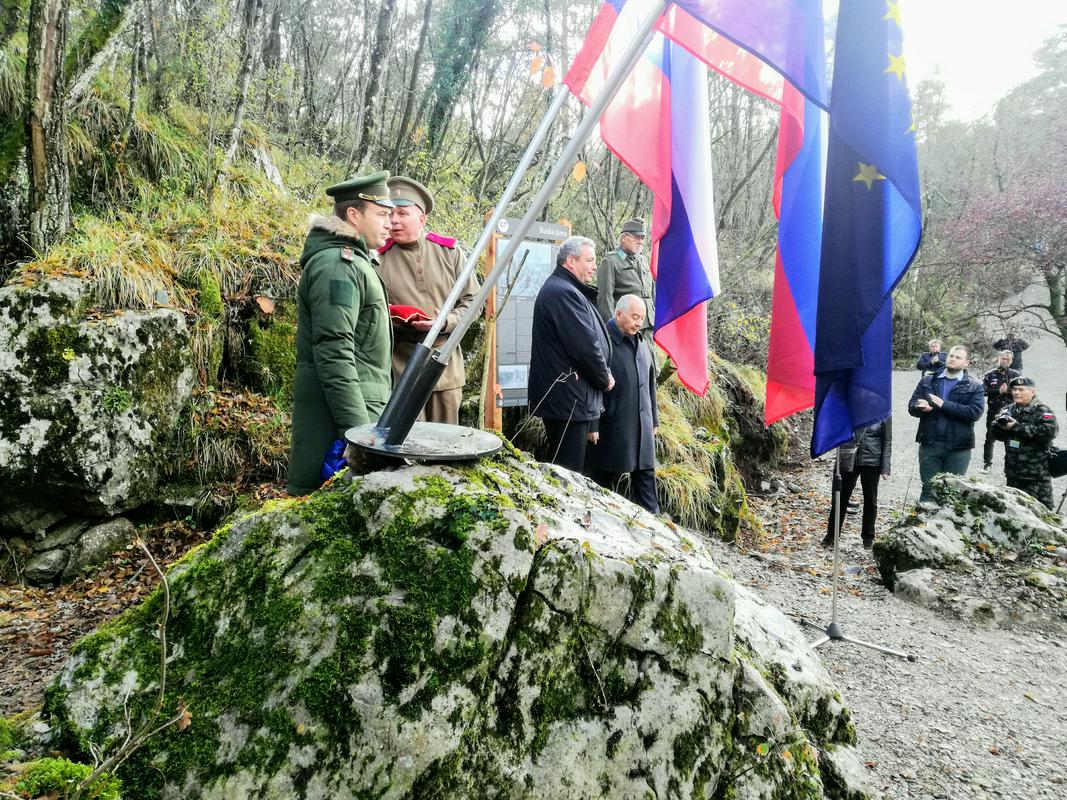
After 1915, 30 thousand Russian prisoners of war were brought to the Isonzo Front. One third never returned to their homeland. In the hinterland, military infrastructure was being built by prisoners living in inhumane conditions. Due to the destructive cannon bombardment, damage to the Kostanjevica–Lokvica in the Karst region of Gorizia road needed continual repairs. Ditches, caves, caverns had to be dug ... They also built a 22-kilometre-long railway line from Dutovlje to Kostanjevica on the Karst.
Russian prisoners of war found shelter from bombardment in a cave - in their memory, the cave was named the Russian Cave. The Karst cavers cleaned it, provided access to it and made renovations.
At the ceremony at the reopening of the Russian Cave and installing information boards, Russian Ambassador to Slovenia Doku Zavgayev was the keynote speaker. He emphasized: "I am grateful to all of you that you keep the memory of our boys and the men who died here, suffering and struggling with straitened military circumstance. The Russian cave is just one of the memorials that testify about our soldiers on your territory. More than 80 monuments to the Russian soldiers are in Slovenia, all being taken care of well. In Russia, too, we are now preparing a list of all Slovenian boys and men who fought on our soil. In the coming year, we will open a common memorial of Slovene-Russian suffering in Moscow."

































































